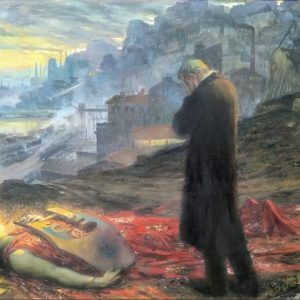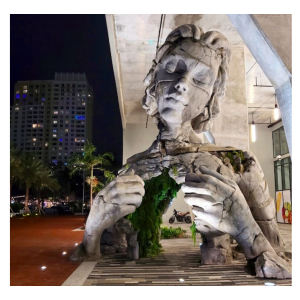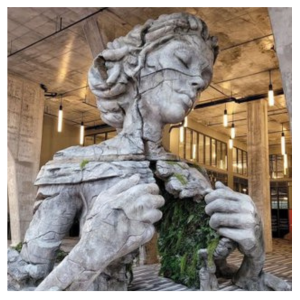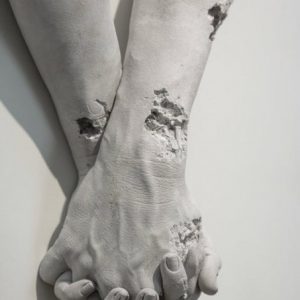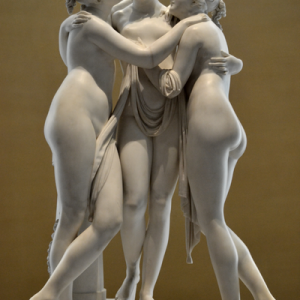Georges Rochegrosse’s painting, “The Knight with the Flower Nymphs” (Le Chevalier aux Fleurs) depicts the scene from Act 2, Scene 2 of Wagner’s popular opera Parsifal. This painting was presented at the Salon in Paris 1894 and was highly praised by critics, who admired its themes of chastity and resisting temptation. As a result, it was acquired by the French state for the Musée du Luxembourg before eventually being transferred to the Musée d’Orsay.
The painting shows Parsifal, who is dressed as a religious pilgrim, standing resolutely in front of Klingsor’s magic garden. The scene is populated by two flower nymphs who can be seen attempting to seductively entice him into their chambers with suggestive gestures. However, despite all their efforts, he looks steadfastly away from them and remains true to his mission without succumbing to temptation. His resistance symbolizes his heroic struggle against sensuality while carrying out his quest for redemption and eternal salvation.
The composition is carefully balanced between light and darkness in order to highlight Parsifal’s internal battle between virtue and vice. While he stands tall in a pool of light surrounded by angels amidst the dark foliage of Klingsor’s garden, his figure exudes strength and determination as he stands firm against sinfulness and desire. In addition to its moral message of righteousness over evil, this painting also serves as a reminder that even when faced with temptation we should always strive for purity in our actions if we are to achieve our goals and live our lives according to higher principles.


